Story Of Atahualpa: The Last Emperor Of The Inca Empire
Ellen Lloyd - AncientPages.com - High in the Andes Mountains of Peru, the Inca built a dazzling empire that governed 12 million people. They had no writing system, but they successfully created an elaborate government, great public works, and a brilliant agricultural system.
Five years before the Spanish arrival, a devastating war of succession gripped the Inca Empire, and this was the beginning of the end.
Atahualpa, Fourteenth Inca. 18th-century painting by the Cusco School, (Brooklyn Museum). Image credit: Brooklyn Museum - Public Domain
Most importantly, the execution of Atahualpa, the last free reigning emperor, marked the end of 300 years of Inca civilization.
Civil war broke out between Atahualpa and his half-brother Huascar
Born c. 1502, Atahualpa was the younger son of Inca ruler Huayna Capac. At Huayna's death, the kingdom was divided between his sons, resulting in a bloody civil war. In 1532, Atahualpa’s army defeated the forces of his half-brother Huascar in a battle near Cuzco, but he couldn’t celebrate his victory for long. Atahualpa was consolidating his rule when Pizarro and his 180 soldiers appeared.
On August 29, 1533, Atahualpa, the 13th and last emperor of the Incas, died by strangulation at the hands of Francisco Pizarro’s Spanish conquistadors.
Francisco Pizarro was sent on an expedition of conquest
Francisco Pizarro was the son of a Spanish gentleman and worked as a swineherder in his youth. He became a soldier and 1502 went to Hispaniola with the new Spanish governor of the New World colony.
Pizarro served under Spanish conquistador Alonso de Ojeda during his expedition to Colombia in 1510 and was with Vasco Nunez de Balboa when he discovered the Pacific Ocean in 1513.
Hearing legends of the great wealth of Indian civilization in South America, Pizarro formed an alliance with fellow conquistador Diego de Almagro in 1524 and sailed down the west coast of South America from Panama.
Returning to Panama, Pizarro planned an expedition of conquest, but the Spanish governor refused to back the scheme. In 1528, Pizarro sailed back to Spain to ask for the support of Emperor Charles V. Hernan Cortes had recently brought the emperor great wealth through his conquest of the Aztec Empire, and Charles approved Pizarro’s plan. He also promised that Pizarro, not Almagro, would receive most of the expedition’s profits. In 1530, Pizarro returned to Panama.
In 1531, he sailed down to Peru, landing at Tumbes. He led his army up the Andes Mountains and, on November 15, 1532, reached the Inca town of Cajamarca.
 Capture of Atahualpa, on 16 November 1532 (by John Everett Millais, 1845). Image credit: John Everett Millais - Public Domain
Capture of Atahualpa, on 16 November 1532 (by John Everett Millais, 1845). Image credit: John Everett Millais - Public Domain
At the time, Atahualpa was enjoying the hot springs in Cajamarca. He was preparing for his march on Cuzco, the capital of his brother’s kingdom.
Pizarro lured Atahualpa into a trap
Pizarro invited Atahualpa to attend a feast in his honor, and the emperor accepted. Having just won one of the most significant battles in Inca history and with an army of 30,000 men, Atahualpa thought he had nothing to fear from the bearded white stranger and his 180 men. Pizarro, however, planned an ambush, setting up his artillery at the square of Cajamarca.
Atahualpa threw the Bible to the ground
On November 16, Atahuallpa arrived at the meeting place with an escort of several thousand unarmed men.
Pizarro sent out a priest to preach to the emperor to accept the sovereignty of Christianity and Emperor Charles V.
However, Atahualpa refused, flinging a Bible handed to him to the ground in disgust. This made Pizarro furious, and he immediately ordered an attack. Buckling under an assault by the terrifying Spanish artillery, guns, and cavalry (all of which were alien to the Incas), thousands of Incas were slaughtered, and the emperor was captured.
Atahualpa negotiated for his release but was executed instead
Atahualpa offered to fill a room with treasure as a ransom for his release, and Pizarro accepted. Eventually, some 24 tons of gold and silver were brought to the Spanish from throughout the Inca Empire.
Although Atahualpa had provided the richest ransom in the history of the world, Pizarro treacherously put him on trial for plotting to overthrow the Spanish, for having his half-brother Huascar murdered, and for several other lesser charges. A Spanish tribunal convicted Atahualpa and sentenced him to die.
On August 29, 1533, the emperor was tied to a stake and offered the choice of being burned alive or strangled by garrote if he converted to Christianity. In the hope of preserving his body for mummification, Atahualpa chose the latter, and an iron collar was tightened around his neck until he died.
Pizarro continued his conquest
With Spanish reinforcements that had arrived at Cajamarca earlier that year, Pizarro marched on Cuzco, and the Inca capital fell without a struggle in November 1533. Huascar’s brother Manco Capac was installed as a puppet emperor, and the city of Quito was subdued. Pizarro established himself as the Spanish governor of Inca territory and offered Diego Almagro the conquest of Chile as appeasement for claiming the riches of the Inca civilization for himself.
In 1535, Pizarro established the city of Lima on the coast to facilitate communication with Panama. Manco Capac escaped from Spanish supervision the next year and led an unsuccessful uprising that was quickly crushed. That marked the end of the Inca resistance to Spanish rule.
Diego Almagro returned from Chile embittered by the poverty of that country and demanded his share of the spoils of the former Inca Empire. Civil war soon broke out over the dispute, and Almagro seized Cuzco in 1538. Pizarro sent his half-brother, Hernando, to reclaim the city, and Almagro was defeated and put to death.
On June 26, 1541, allies of Diego el Monzo—Almagro’s son—penetrated Pizarro’s palace in Lima and assassinated the conquistador while he was eating dinner. Diego el Monzo proclaimed himself governor of Peru, but an agent of the Spanish crown refused to recognize him, and in 1542, Diego was captured and executed. Conflict and intrigue among the conquistadors of Peru persisted until Spanish Viceroy Andres Hurtado de Mendoza established order in the late 1550s.
Written by - Ellen Lloyd – AncientPages.com
Updated on July 26, 2024
Copyright © AncientPages.com All rights reserved. This material may not be published, broadcast, rewritten or redistributed in whole or part without the express written permission of AncientPages.com
More From Ancient Pages
-
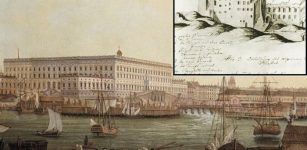 On This Day In History: Fatal Fire Broke Out In Tre Kronor “Three Crowns” Castle, Stockholm, Sweden – On May 7, 1697
News | Dec 7, 2021
On This Day In History: Fatal Fire Broke Out In Tre Kronor “Three Crowns” Castle, Stockholm, Sweden – On May 7, 1697
News | Dec 7, 2021 -
 Evil Spirits And Demons Of Marshes And Swamps In Slavic Folklore
Featured Stories | Nov 16, 2016
Evil Spirits And Demons Of Marshes And Swamps In Slavic Folklore
Featured Stories | Nov 16, 2016 -
 Famous Viking Ragnar Lodbrok – Legendary Fearless Sea-King Of The North
Featured Stories | Apr 24, 2016
Famous Viking Ragnar Lodbrok – Legendary Fearless Sea-King Of The North
Featured Stories | Apr 24, 2016 -
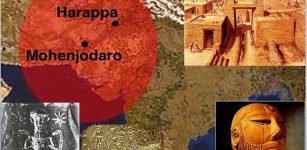 Indus Valley Civilization Far Ahead Of Its Time Has Baffled Scientists For Centuries
Ancient Technology | May 18, 2017
Indus Valley Civilization Far Ahead Of Its Time Has Baffled Scientists For Centuries
Ancient Technology | May 18, 2017 -
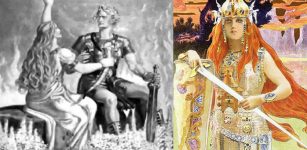 Valkyries Sigrdriva And Brynhildr: Brave Warriors Who Were Punished By God Odin In Norse And Germanic Mythology
Featured Stories | Apr 4, 2017
Valkyries Sigrdriva And Brynhildr: Brave Warriors Who Were Punished By God Odin In Norse And Germanic Mythology
Featured Stories | Apr 4, 2017 -
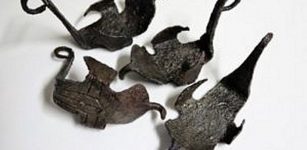 Remarkable ‘Hipposandals’ Found At Vindolanda
Archaeology | Aug 18, 2018
Remarkable ‘Hipposandals’ Found At Vindolanda
Archaeology | Aug 18, 2018 -
 What Is The History Of Pancakes?
Ancient History Facts | Mar 7, 2024
What Is The History Of Pancakes?
Ancient History Facts | Mar 7, 2024 -
 Rudolf II: Eccentric Holy Roman Emperor Whose Occult Interest And Mistakes Led To The Thirty Years’ War
Featured Stories | Apr 9, 2021
Rudolf II: Eccentric Holy Roman Emperor Whose Occult Interest And Mistakes Led To The Thirty Years’ War
Featured Stories | Apr 9, 2021 -
 Unusual 2,500-Year-Old Face Urns Reveal Garments, Appearance And Jewelry Of Prehistoric People
Archaeology | Nov 11, 2017
Unusual 2,500-Year-Old Face Urns Reveal Garments, Appearance And Jewelry Of Prehistoric People
Archaeology | Nov 11, 2017 -
 The Nunnehi – Immortal Spirit People And Mysterious Protectors Of The Cherokee Nation
Featured Stories | Mar 21, 2018
The Nunnehi – Immortal Spirit People And Mysterious Protectors Of The Cherokee Nation
Featured Stories | Mar 21, 2018 -
 Remains of Maurya-Era Wall Discovered In Tilaurakot, Kapilvastu, Nepal
Archaeology | Jun 16, 2022
Remains of Maurya-Era Wall Discovered In Tilaurakot, Kapilvastu, Nepal
Archaeology | Jun 16, 2022 -
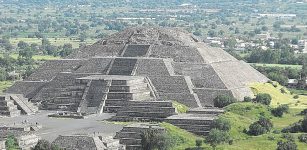 Pyramid Of The Moon At Teotihuacán – Underground Tunnel And Chamber Found
Archaeology | Oct 29, 2018
Pyramid Of The Moon At Teotihuacán – Underground Tunnel And Chamber Found
Archaeology | Oct 29, 2018 -
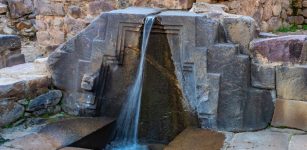 Incamisana Water Temple At Ollantaytambo, Peru: Marvelous Engineering Masterpiece Of Inca
Ancient Technology | Jul 19, 2019
Incamisana Water Temple At Ollantaytambo, Peru: Marvelous Engineering Masterpiece Of Inca
Ancient Technology | Jul 19, 2019 -
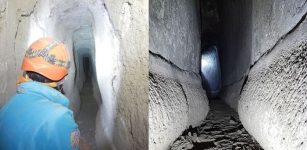 Giant Ancient Roman Underground Structure Discovered Near Naples, Italy – Aqua Augusta Investigated
Archaeology | Feb 6, 2023
Giant Ancient Roman Underground Structure Discovered Near Naples, Italy – Aqua Augusta Investigated
Archaeology | Feb 6, 2023 -
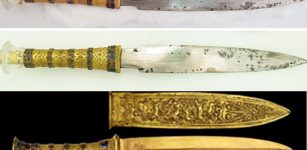 King Tut’s Cosmic Dagger Was Not Made In Egypt – New Study Reveals
Archaeology | Feb 24, 2022
King Tut’s Cosmic Dagger Was Not Made In Egypt – New Study Reveals
Archaeology | Feb 24, 2022 -
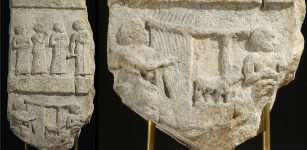 Mesopotamian Music Stele That Commemorates Gudea King Of Lagash In Temple Foundation Ceremony
Artifacts | Dec 12, 2016
Mesopotamian Music Stele That Commemorates Gudea King Of Lagash In Temple Foundation Ceremony
Artifacts | Dec 12, 2016 -
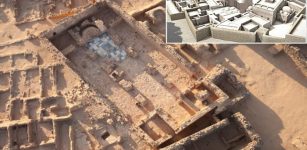 Virtual Nubia: Sudan’s Medieval Monasteries Digitally Reconstructed By Polish Archaeologists
News | Oct 8, 2020
Virtual Nubia: Sudan’s Medieval Monasteries Digitally Reconstructed By Polish Archaeologists
News | Oct 8, 2020 -
 65 Byzantine-Era Tombs Unearthed In Stratonikeia – World’s Largest Marble City
Archaeology | Feb 24, 2017
65 Byzantine-Era Tombs Unearthed In Stratonikeia – World’s Largest Marble City
Archaeology | Feb 24, 2017 -
 Neanderthals Cared For Each Other And Survived Into Old Age – Study Shows
Evolution | Nov 2, 2023
Neanderthals Cared For Each Other And Survived Into Old Age – Study Shows
Evolution | Nov 2, 2023 -
 Yew: Mysterious Ominous And Sacred Tree Revered By Our Ancestors Since The Dawn Of Civilization
Featured Stories | Feb 8, 2022
Yew: Mysterious Ominous And Sacred Tree Revered By Our Ancestors Since The Dawn Of Civilization
Featured Stories | Feb 8, 2022

